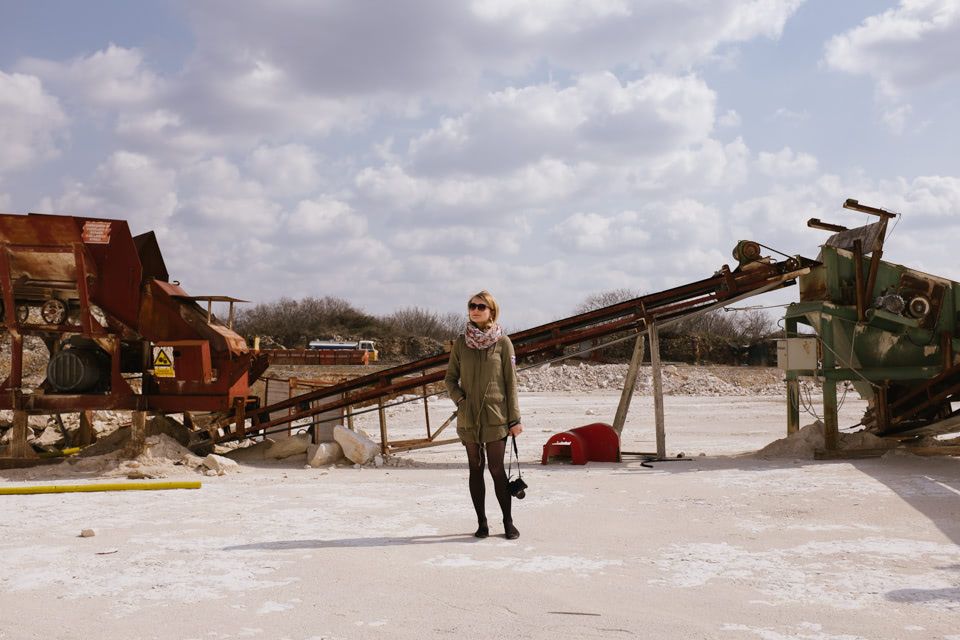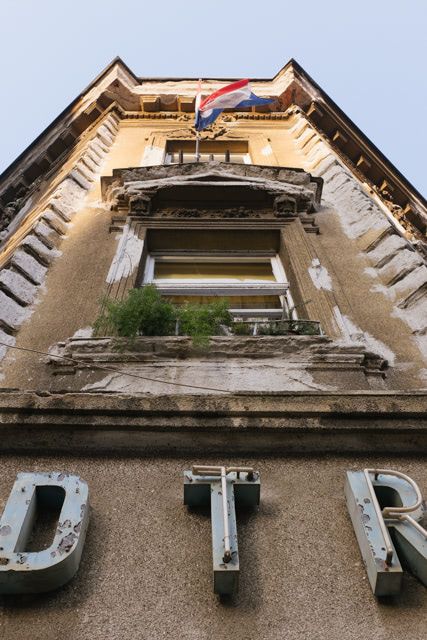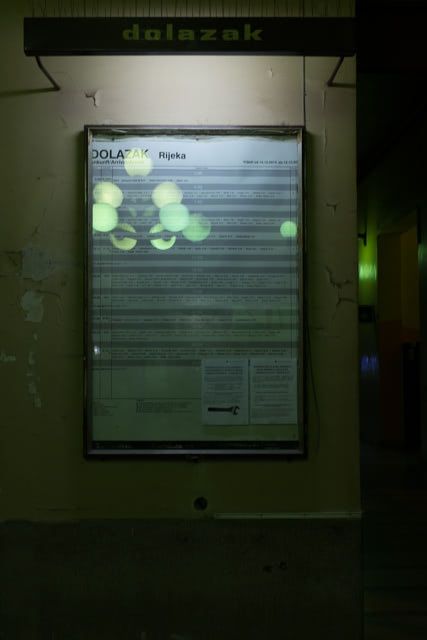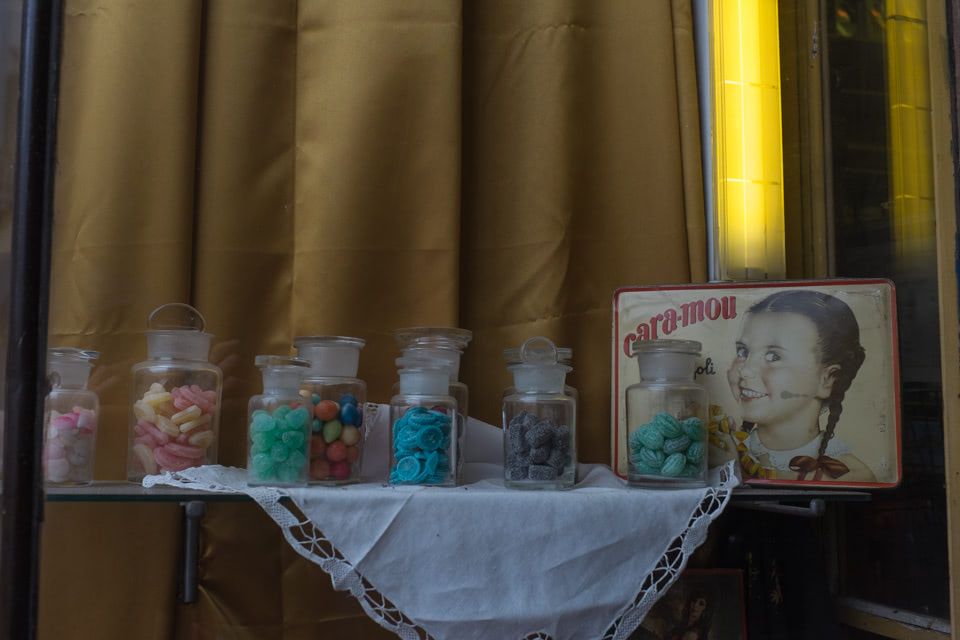Ruin Erotica
April 1, 2015 Eastern Europe Travel Abandoned Jamie Rann Yugoslavia Croatia Slovenia
Attention is a funny thing. I am on a train in Italy, on a humid, grey spring day. My gaze is caught by a rusty sign near the tracks, and I stare at it before it glides out of sight. Among the many things to consider (the grazing cows, the Alps in the distance) it is usually the old, the rusty and the torn that fascinates me. Not only because it captures my attention — but also my imagination.
The rusty sign tells a story of countless rainy days like this one, all of which slowly eroded the once brilliant paint. That fascination with decay carries an undeniable morbidity. A few months ago, I linked to an article by Jamie Rann in the “Calvert Journal”, which had published a very well-written critique of what it called the contemporary “ruin erotica”, the allure and exploitation of de-industrialized Eastern Europe for content.
During this trip — from Croatia through Slovenia and to this train in Italy — I keep thinking back to that article’s most poignant parts: How photographing ruins says more about us than it does about the countries we supposedly picture and how it confirms stereotypes that are no longer true.
“As many have observed, the nostalgic aspect of ruin photography is connected to a certain post-modern alienation: the ruins of the 20th century seem to conjure a lost, longed-for time of ideological self-confidence and practical purpose.”
 DSCF2175
DSCF2175
 DSCF2050
DSCF2050
And then there is the question of morale: Admiring a crumbling façade does make one forget about the misery of those living inside of the buildings. The people who would certainly prefer something else — if only to get rid of a German tourist taking photos.
That abandoned house on the roadside surely belonged to someone who was unhappy to leave it—and their belongings—behind. The surfaces betray tragedy, their gritty looks distract from the poverty and the sadness, which makes admiring them seem a little voyeuristic. And yet I can’t help but take pictures of the faded glory.
In fact, the majority of images I took on this trip were of such surfaces, of empty lots and old signs, artifacts reminiscent of these countries’ days as part of Yugoslavia. The photos are very selective, because all the places I visited have brand-new parts, proper amenities and renovated building. But I skip all of that, choosing to instead linger in places where the grit and dirt has remained, where empty hallways smell of mold and the streetlights flicker.
 DSCF2208
DSCF2208
I am not sure it is just morbid or voyeuristic, though. This fascination isn’t really one with poverty and ruin but with the past: The grit is a remainder of the times that once were. When I stand in the central hall of Rijeka’s train station, where they still fill out the tickets by hand, I can picture Yugoslavian passengers—the most unconstrained travelers in all Cold-War Europe—as they wait for their trains towards either side of the Iron Curtain.
Then I imagine them shuffling towards the trains, suitcases in tow—and I can almost hear their footsteps, like one imagines the rumbling of the waves when holding a seashell to the ear.
As my own city’s looks have become more sanded down over the years, as Berlin’s very own empty lots have been filled with identical shopping malls and its old signs taken down, “ruin erotica” is what still transports me into the past. And I would argue that this causes a very different understanding of the places I visit: One that sees them not just for what they are today, but for how they got there.
 DSCF2246
DSCF2246